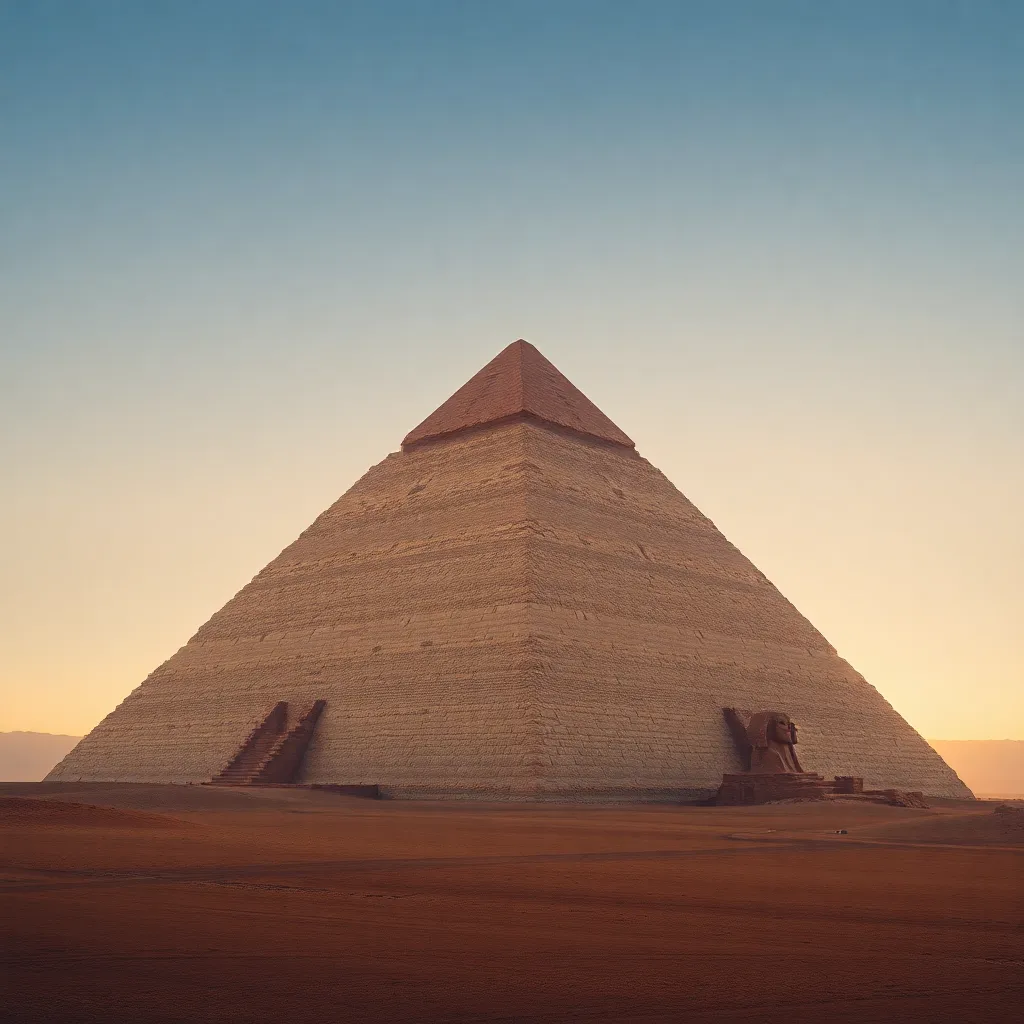The Pyramid of Ibi: A Forgotten Royal Tomb
I. Introduction
The Pyramid of Ibi, a lesser-known yet significant structure in ancient Egypt, stands as a testament to the grandeur and complexity of Egyptian funerary practices. Nestled in the necropolis of Saqqara, this pyramid serves as a reminder of the rich tapestry of royalty and the elaborate customs surrounding death and the afterlife in ancient Egyptian civilization.
Understanding the Pyramid of Ibi is crucial for appreciating the broader context of ancient Egyptian history, particularly during the tumultuous times of the late Middle Kingdom and the Second Intermediate Period. This article aims to explore the historical significance, architectural features, burial practices, and ongoing preservation efforts surrounding this enigmatic royal tomb.
II. Historical Context
The Pyramid of Ibi was constructed during the 13th Dynasty, around the 18th Century BC, a time marked by political fragmentation and the decline of centralized power in Egypt. Ibi is believed to have been one of the last kings of this era, ruling during a period when the authority of the pharaoh was being challenged by regional leaders and foreign invaders.
In the context of Egyptian royalty, the pyramid served not only as a burial site but also as a symbol of Ibi’s divine right to rule. Unlike the grandiose structures of earlier periods, such as the Pyramids of Giza, the Pyramid of Ibi reflects a shift in royal burial practices and architectural styles.
- Pyramids of Giza: Built during the Fourth Dynasty, these pyramids are monumental in scale and complexity.
- Pyramid of Ibi: Smaller and less elaborate, it signifies the changes in royal power and resources during the 13th Dynasty.
III. Discovery of the Pyramid
The Pyramid of Ibi remained hidden for centuries until its rediscovery in the early 20th century. The timeline of its discovery is marked by significant archaeological endeavors in the Saqqara region.
- Early 1900s: Archaeologists began systematic excavations in Saqqara, uncovering the tomb.
- Key Figures: Notable Egyptologists, including Gustave Jéquier, played vital roles in the excavation.
- Initial Reactions: The discovery was met with excitement, as it offered new insights into the 13th Dynasty and burial practices.
IV. Architectural Features
The architectural design of the Pyramid of Ibi is distinctive, reflecting the evolution of pyramid construction techniques. The pyramid features a step-like structure, which contrasts with the smooth-sided pyramids of earlier dynasties.
The layout includes:
- Subterranean Chambers: A series of burial chambers located deep beneath the pyramid.
- Mortuary Temple: Attached to the pyramid, serving as a site for rituals and offerings.
- Unique Construction Techniques: Use of locally sourced limestone and innovative methods for the time.
The significance of these architectural elements lies in their reflection of the socio-political changes occurring in Egypt during Ibi’s reign, showcasing a transition in royal funerary architecture.
V. The Burial Practices of Ibi
Ancient Egyptian burial customs were intricate and deeply symbolic, designed to ensure safe passage to the afterlife. The burial practices associated with Ibi reveal much about the beliefs and traditions of the time.
- Overview of Customs: The mummification process, accompanied by elaborate funerary rituals.
- Artifacts Found: Numerous items were discovered within the tomb, including:
- Jewelry
- Canopic jars
- Funerary texts and amulets
- Implications: These findings enhance our understanding of royal practices and the significance of the afterlife in ancient Egyptian culture.
VI. Theories Surrounding Ibi’s Identity
The identity of Ibi remains a subject of scholarly debate. Historical accounts suggest he was a ruler during a time of considerable upheaval in Egypt.
- Historical Accounts: Ibi is often mentioned in ancient texts, but details about his reign are sparse.
- Debates Among Scholars: Some scholars argue about Ibi’s lineage and his connections to other dynasties.
- Impact on Understanding: Ibi’s identity, or lack thereof, has implications for our comprehension of the political landscape of the 13th Dynasty.
VII. Current Status and Preservation Efforts
Today, the Pyramid of Ibi faces several challenges regarding its preservation. The condition of the pyramid has deteriorated over time due to natural erosion and human impact.
- Condition Today: The structure is in need of conservation work to prevent further decay.
- Ongoing Research: Archaeologists continue to study the site, employing modern techniques to uncover more about Ibi and his burial practices.
- Challenges: Preservation efforts are hindered by funding shortages and the need for specialized conservation skills.
VIII. Conclusion
The Pyramid of Ibi, though often overshadowed by its more famous counterparts, holds a critical place in the narrative of ancient Egyptian history. Its discovery and ongoing research shed light on the complexities of royal life and death during a pivotal period in Egypt’s past.
Preserving Egypt’s archaeological heritage is imperative, not only for understanding our history but also for appreciating the cultural treasures that have shaped human civilization. Continued research and exploration of lesser-known sites like the Pyramid of Ibi are essential for a more comprehensive understanding of ancient Egypt.
As we reflect on the significance of the Pyramid of Ibi, let us advocate for the protection and study of these invaluable historical sites, ensuring that their stories are not forgotten.




